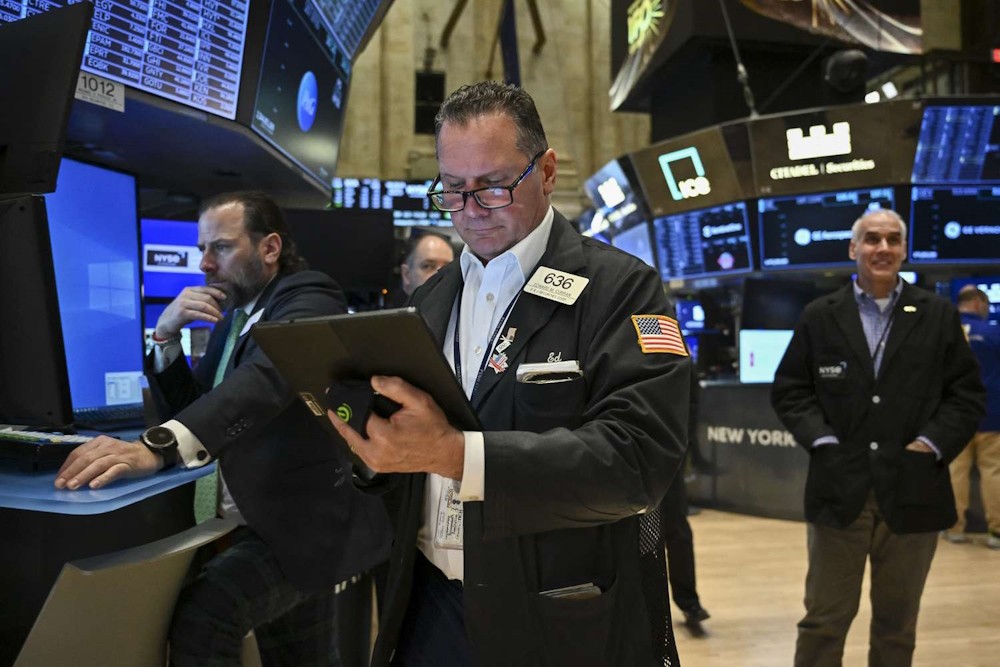
U.S. stock futures exhibited a lackluster performance on Tuesday, as market participants positioned themselves in anticipation of President Donald Trump’s highly awaited announcement regarding extensive new tariffs. Treasury Secretary Scott Bessent has indicated that the announcement is scheduled for April 2, coinciding with the White House’s release of a list detailing foreign countries’ regulations deemed as trade barriers. Market participants are closely monitoring the forthcoming job openings data, while the prevailing uncertainty surrounding tariffs is contributing to a surge in gold prices, reaching a new record high.
U.S. stock futures remained largely unchanged as global markets prepare for the impending announcement of new tariffs by President Trump later this week. As of 03:34 ET (07:34 GMT), the futures contracts for the Dow, S&P 500, and Nasdaq 100 exhibited minimal variation, remaining largely stable. The primary indices on Wall Street exhibited a mixed performance at the conclusion of trading on Monday, as market participants paused for reflection ahead of the anticipated announcement of tariffs by Trump on April 2, a date he has referred to as “Liberation Day.”
Trump has contended that the imposition of tariffs is essential for rectifying disparities between the United States and its international trade counterparts, while also serving as a mechanism to restore manufacturing employment domestically. Nonetheless, certain analysts have cautioned that the imposition of these duties may exacerbate inflationary pressures and hinder economic growth, potentially resulting in a phase characterized by stagnation and inflation. Concerns regarding the potential implementation of tariffs have negatively impacted investor sentiment, which had previously been buoyed by expectations that Trump would introduce pro-growth and business-friendly policies. Consequently, the benchmark S&P 500 index has experienced its most challenging first quarter since 2022.
On April 2 at 15:00 ET (19:00 GMT), former President Trump is set to unveil a new series of trade tariffs, as indicated by Treasury Secretary Scott Bessent during a Fox News interview on Monday. Bessent stated, “I will refrain from preempting President Trump; he is scheduled to make the announcement at three o’clock on Wednesday,” during an interview with Fox News’ Sean Hannity. “We anticipate a shift towards equitable trade practices […] all parties will have the chance to reduce their tariffs and non-tariff barriers […] ultimately restoring fairness in the global trading system for American labor,” Bessent stated. Bessent’s remarks reflect a sentiment similar to Trump’s assertion that the United States faces inequitable treatment in international trade dynamics. Trump intends to implement tariffs that correspond to those levied by key trading partners on U.S. products.
On Monday evening, the White House published a comprehensive inventory of foreign nations’ regulations that it considers to be trade impediments, encompassing applied tariff rates and a range of regulations from food safety to renewable energy. Market participants are closely monitoring a range of economic indicators set to be released this week, alongside a forthcoming address by Federal Reserve Chair Jerome Powell regarding the current economic landscape.
Today, markets will analyze the February data on job openings, marking the beginning of a series of labor market indicators that will lead up to the critical nonfarm payrolls report scheduled for Friday. The Job Openings and Labor Turnover Survey, commonly referred to as the JOLTS report, is projected to register at 7.690 million for the final day of February, a decline from the 7.740 million recorded in the preceding month. The data, often viewed as an indicator of labor demand, emerge amid increasing concerns that Trump’s tariffs may precipitate an economic downturn. Goldman Sachs analysts have revised their projection for the likelihood of a recession upward to 35%.
In March, Chinese manufacturing activity exceeded expectations, reaching a four-month high, driven by a consistent increase in new orders, according to private Purchasing Managers’ Index (PMI) data released on Tuesday. However, the outlook continues to be overshadowed by the implications of Trump’s tariff proposals. In March, the Caixin manufacturing PMI registered a growth of 51.2, surpassing the anticipated figure of 50.6 and exceeding the previous month’s reading of 50.8. An index reading exceeding 50 indicates expansion, and the increase observed in March, the most significant since November, represents the sixth consecutive month of growth.
Increased demand coupled with the introduction of new products has contributed to a rise in new business inflows. Foreign demand has shown a notable uptick, as companies indicated the most rapid rise in export orders observed in almost a year, according to the PMI survey. “A significant proportion of the companies surveyed indicated optimism regarding the short-term economic forecast, though a subset expressed reservations about the possibility of heightened global trade tensions,” stated Wang Zhe, senior economist at Caixin Insight.
Gold prices reached a new all-time high during Asian trading on Tuesday, driven by the metal’s appeal as a safe haven as market participants braced for impending tariff announcements from Trump. The ambiguity associated with these trade policies has prompted investors to gravitate towards gold, a commodity historically regarded as a safe-haven asset amid geopolitical and economic turbulence. The yellow metal has achieved a series of unprecedented record highs over the past four sessions.
In other developments, Bitcoin experienced an uptick, stabilizing after a significant decline of approximately 11% in the first quarter, as market sentiment remains weak amid the imposition of tariffs by Trump.
In the interim, oil prices experienced a modest uptick following Trump’s threats to implement secondary tariffs on Russian crude and to take military action against Iran. However, concerns regarding the potential impact of trade tariffs on global economic growth limited the extent of these gains. The benchmarks reached five-week highs the previous day.
